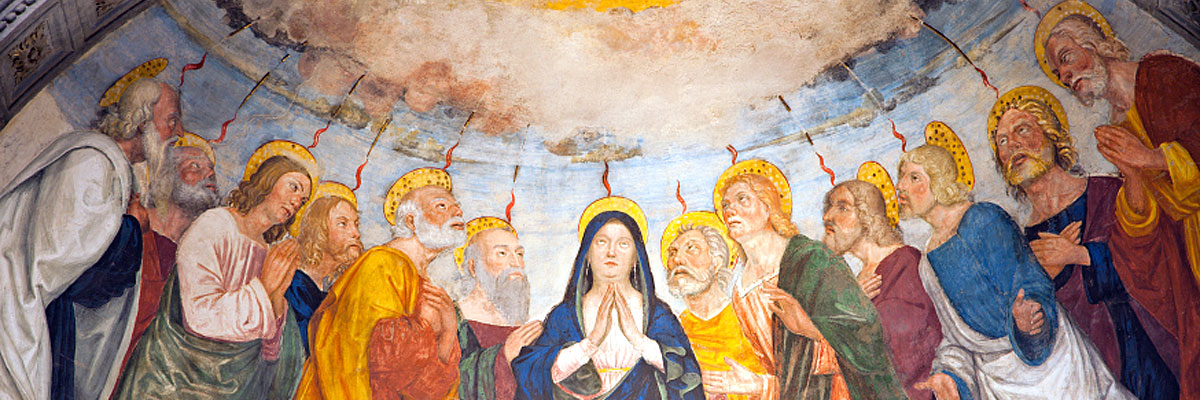
Understanding Our Church
A Treasury of Arkansas Writers Discussing the Catholic Faith
Official Website of the
Catholic Diocese of Little Rock
Literature often echoes faith, hope, sometimes without author realizing it
Published: February 1, 2020
By Edward C. Dodge
Catholic High School for Boys
Years ago, students took my photo from the school website and used it to create a meme. The caption above my photo read: “‘Cat in the Hat Comes Back’ Symbolizes Resurrection.” We all had a pretty hearty laugh, primarily because it was true! Story after story, poem after poem, we’d learned that good literature has, at its core, the promise of God’s love and action in our lives.
When we follow the motifs back from story to story, from modern movies to Flannery O’Conner’s stories, from Dante to King Arthur or to Beowulf himself, it is Jesus we find, waiting to share with us the greatest story ever told.
Warning: spoilers abound! Perhaps we aren’t surprised to find God when we read “old” stories such as Chaucer’s “The Canterbury Tales,” where the joyful parson knows that if gold rusts, iron will, too — emphasizing the parson’s awareness that he (the gold) must set the standard for his parishioners.
My students are, however, often surprised by Christ present in even Viking works like “Beowulf,” whose funeral is striking: in pagan religions, souls always descend, yet heaven accepts the smoke from Beowulf’s funeral pyre (the Ascension), and after 10 days of building his burial mound (Pentecost), 12 of the deceased king’s men (apostles) ride to tell everyone the good news of their prince.
We see God throughout Shakespeare: Hamlet finally realizes that “the readiness is all,” and in order to rid Denmark of the false king Claudius (whom Hamlet’s father called the serpent that’d snuck into the garden), he accepts death on a poisoned sword — the poison representing sin, and the sword resembling a cross.
I especially enjoy teaching Shakespeare’s Sonnet 33, in which the Bard laments his own son’s early death but comforts himself thinking, “Suns of the world may stain when heaven’s sun staineth.” If heaven’s Son suffered, should our sons be exempt? Even the numbering offers a clue: by tradition, Jesus was 33 when he died.
More recent literature remains incredibly interested in God and his Incarnation. Many of us recognize Christ in Narnia’s Aslan, but Lucy certainly does when she meets him as a lamb in “Voyage of the Dawn Treader.” Joyce’s “Araby” imagines the emptiness of a world without God — there’d be no purpose, no romance — whereas Tolkien’s Middle Earth is ripe with Christ imagery, from Frodo’s bearing the cross of the ring to the true king Aragorn’s raising the humiliated dead to vindicate themselves in battle against evil.
But many miss the Gospel in Rowling’s “Harry Potter” books. The evil wizard Voldemort splits his soul into six pieces in an effort to effect immortality, but he’d accidentally placed a seventh piece into Harry himself, and seven is a holy number.
By the series’ end, Harry tries to defeat Voldemort’s power with equal power; however, when Harry realizes that the enemy cannot be defeated in this way, but only through Harry’s surrender to death (as the last of Voldemort’s soul-containers), he succumbs without hesitation, awakening in a train station called King’s Cross in a moment outside time before returning victoriously to life.
In a commentary on the film “World War Z,” about a “zombie apocalypse,” Bishop Robert Barron commented that films and stories today often tell the story of sin and redemption more powerfully than we realize. If you like zombie movies, look his video up on YouTube.
The story of God’s love is so inscribed upon the human heart that our literature echoes our faith and hope, sometimes without the author’s even realizing it. The writer of “World War Z” may be surprised that his hero is a Christ figure, just like Superman or Neo in “The Matrix,” but when we follow the motifs back from story to story, from modern movies to Flannery O’Conner’s stories, from Dante to King Arthur or to Beowulf himself, it is Jesus we find, waiting to share with us the greatest story ever told.



